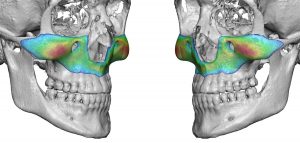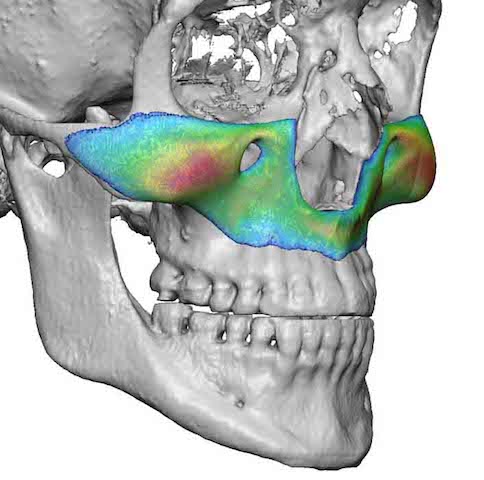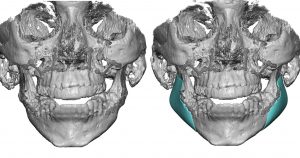Orthognathic surgery produces significant facial skeletal changes and bite correction. For many patients who undergo orthognathic surgery that operation addresses all of their facial concerns and no further surgery is required. But by the nature of where and how the maxillary and mandibular osteotomies are done, contour irregularities along the jawline can occur as well as facial deficiencies left untreated that lie beyond the osteotomy lines.
Historically these facial contour and irregularity issues were treated secondarily with standard facial implants and various alloplastic contouring materials. (e.g., hydroxyapatite granules/cements, ePTFE sheeting) While the placement of standard implants and the surgeon ‘customizing” implant materials during surgery can be helpful, they often introduce their own contour deformities due to the imprecise nature of these approaches.
In the September 2018 issue of the journal Plastic and Reconstructive Surgery, an article was published entitled ‘Refining Post-Orthognathic Surgery Facial Contour with Computer-Designed /Computer Manufactured Alloplastic Implants.’ In this paper the authors review their experience in 21 patients who had prior orthographic surgery (Lefort I, sagittal split mandibular osteotomies) who had contour irregularities and facial imbalances. Implants were computer design and custom made from three materials, solid silicone (9), porous polyethyene ( 6) and polyetheretherketone. (6) With an average two year followup, the only complication was seen in one patient who had to have their implants removed due to infection. All other patients had satisfactory results with no need for removal or revision.

The revision rates with trying to use an off-the-shelf alloplastic materials for facial contouring with irregular skeletal anatomy and asymmetries is not low.While custom implants cost more, a failed use of standard implants that results in more surgery can quickly exceed the cost of an initial custom implant approach.
Dr. Barry Eppley
Indianapolis, Indiana




